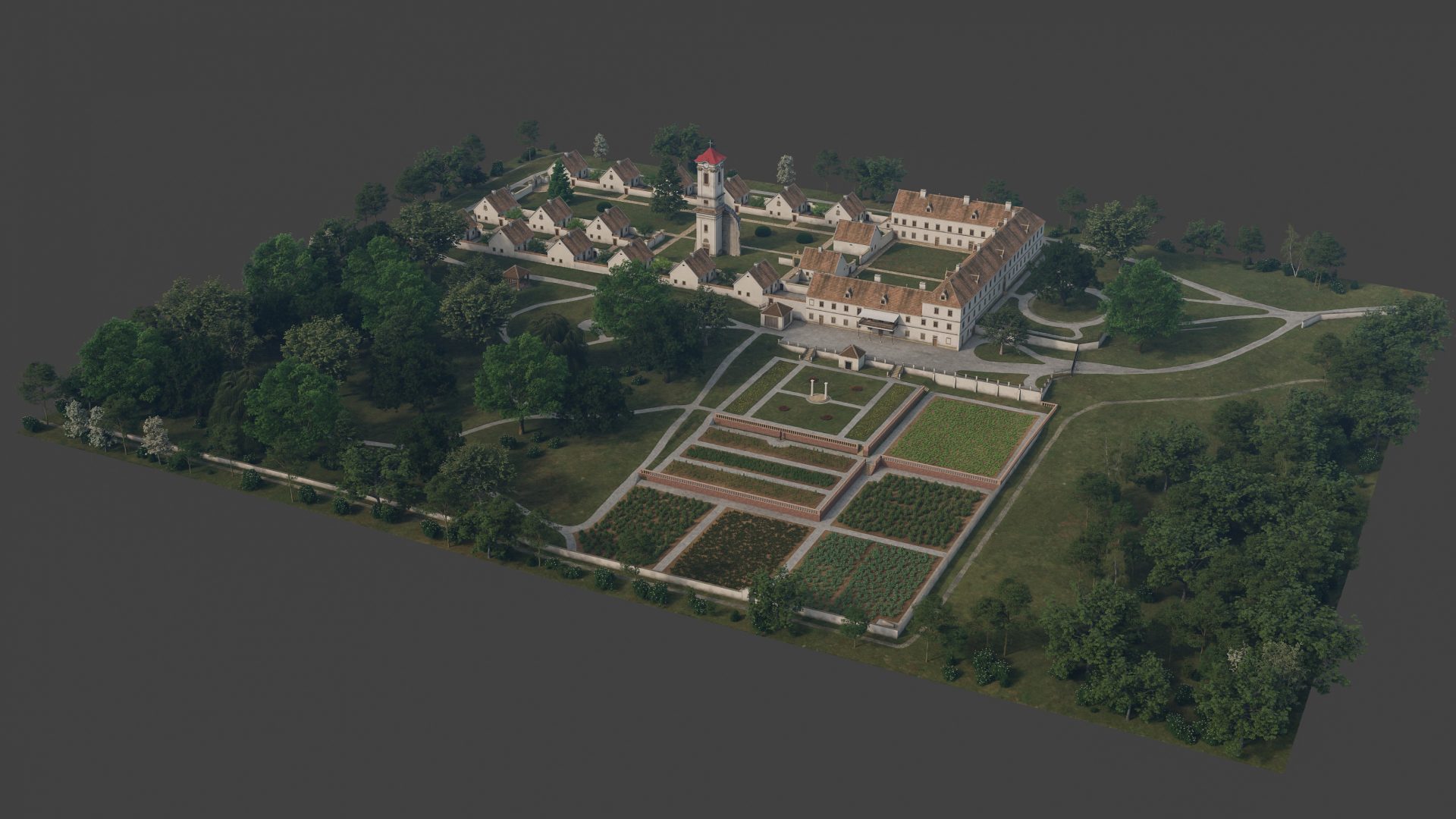
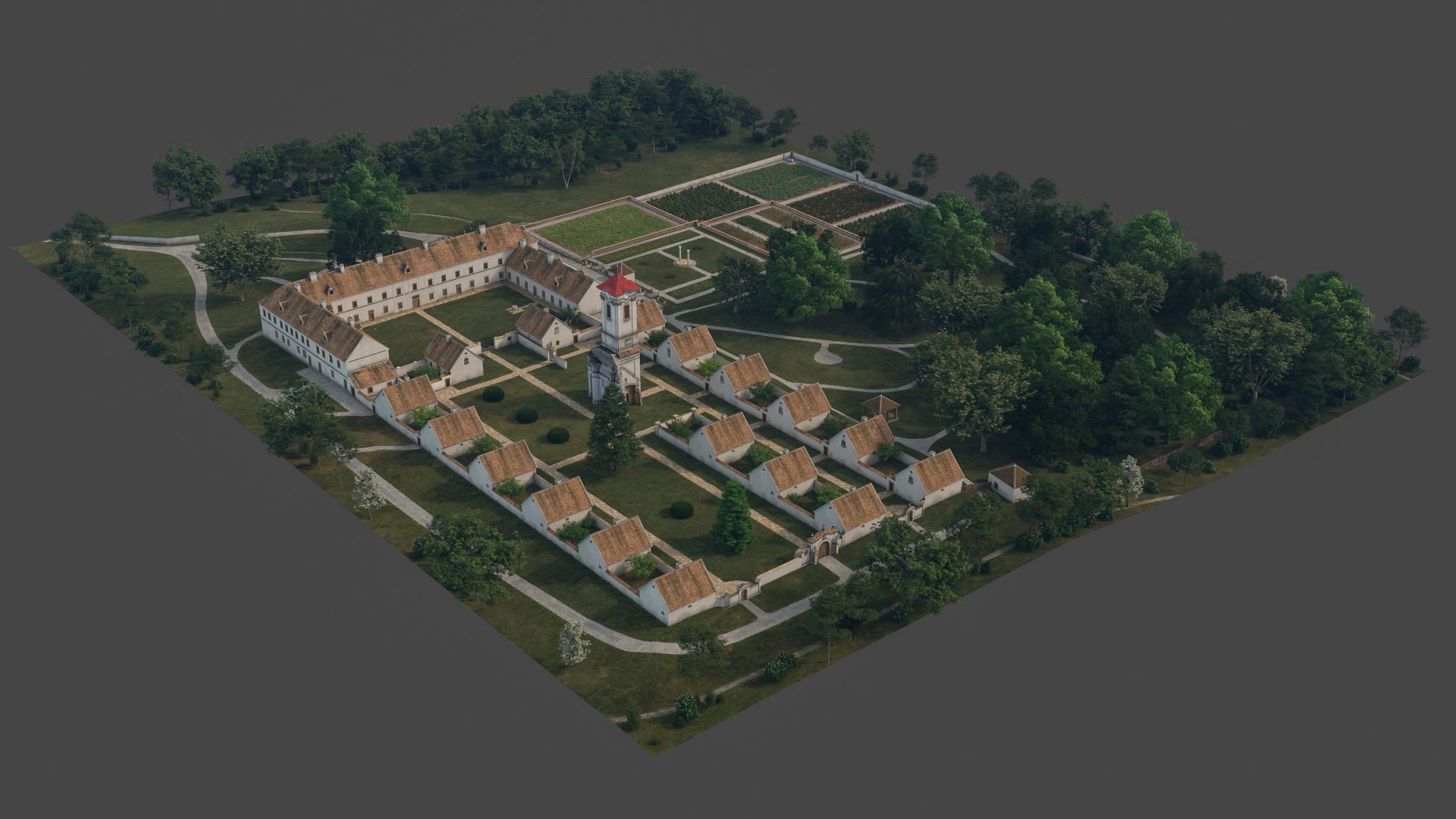
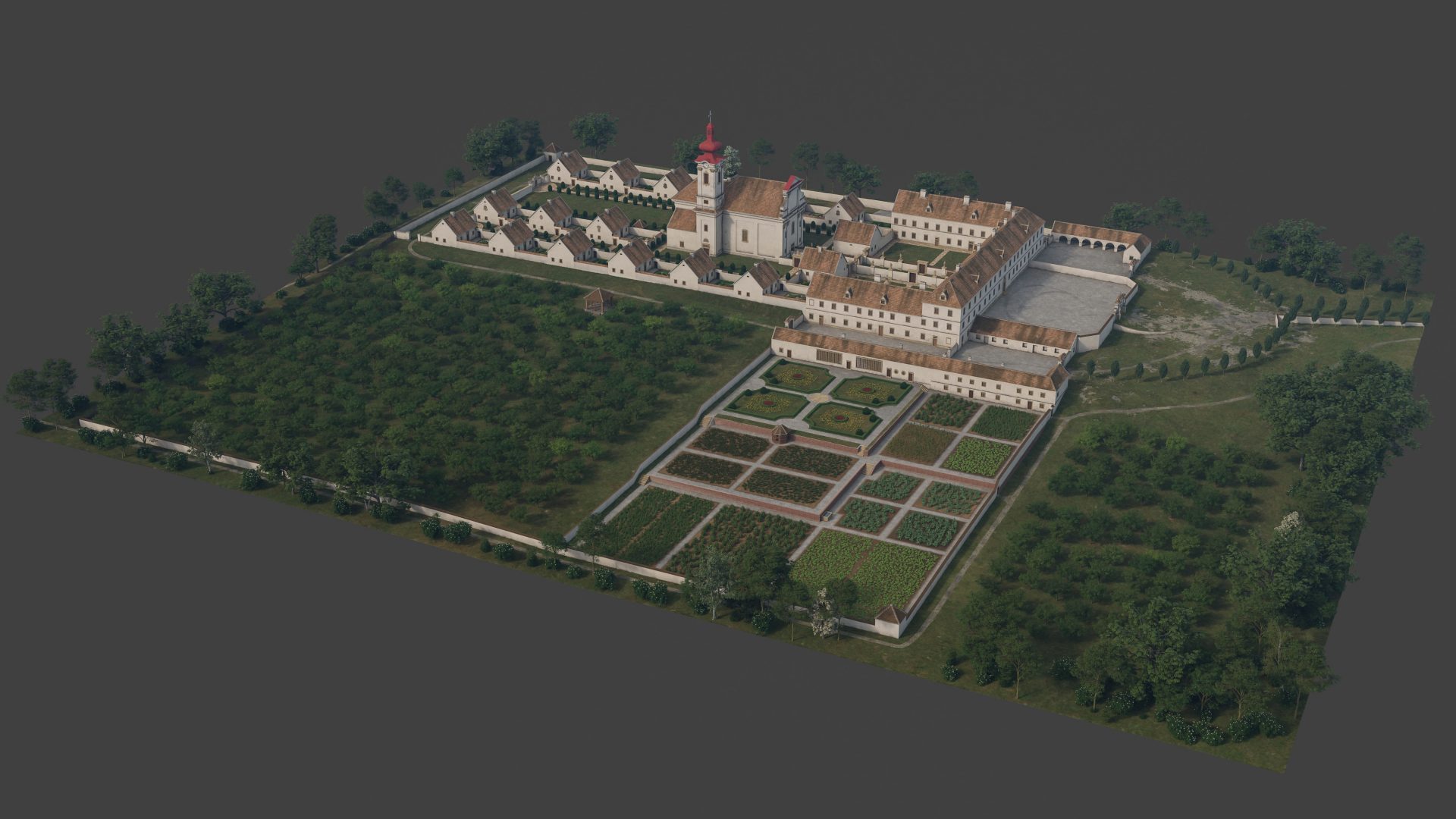
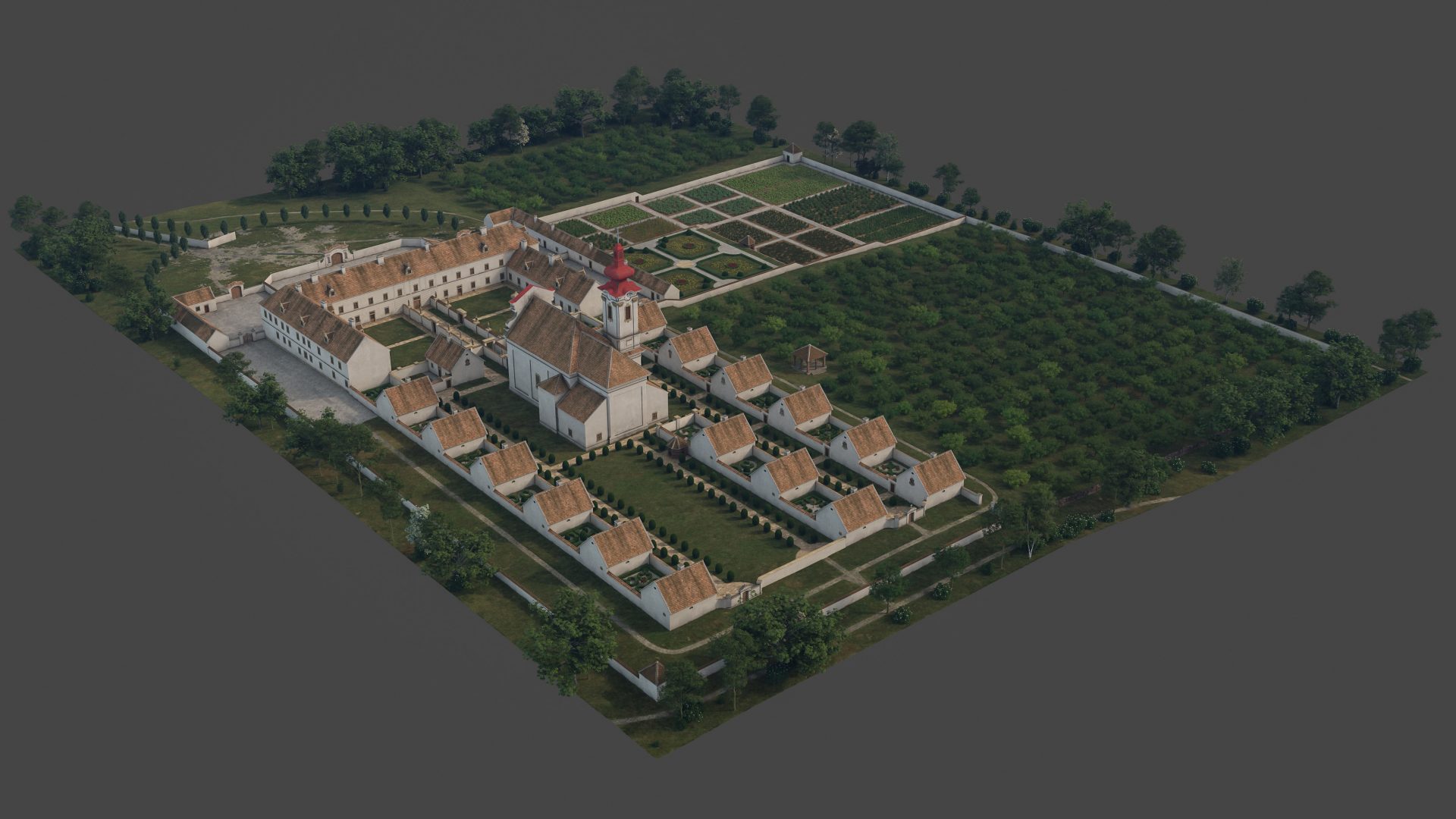
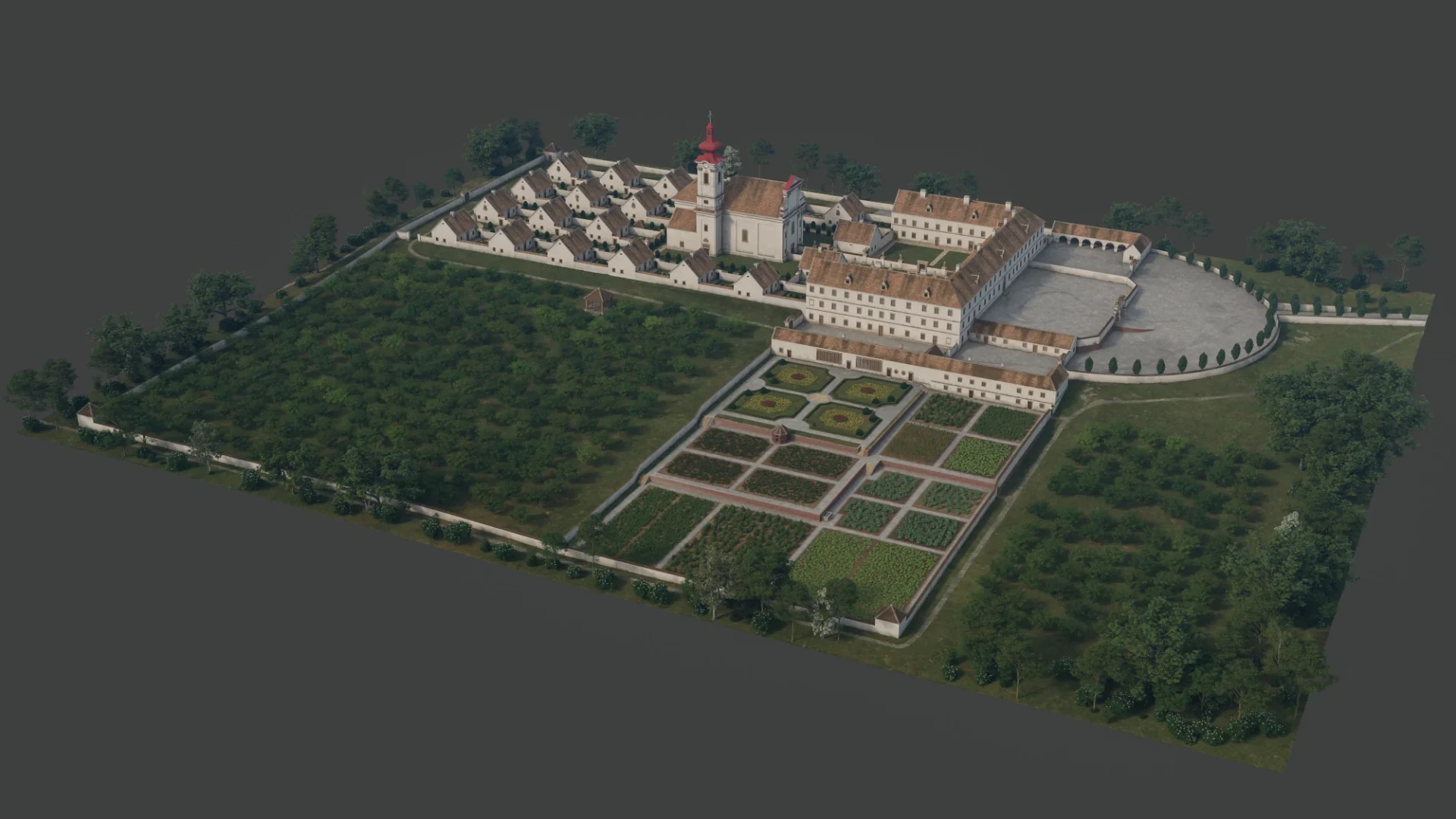
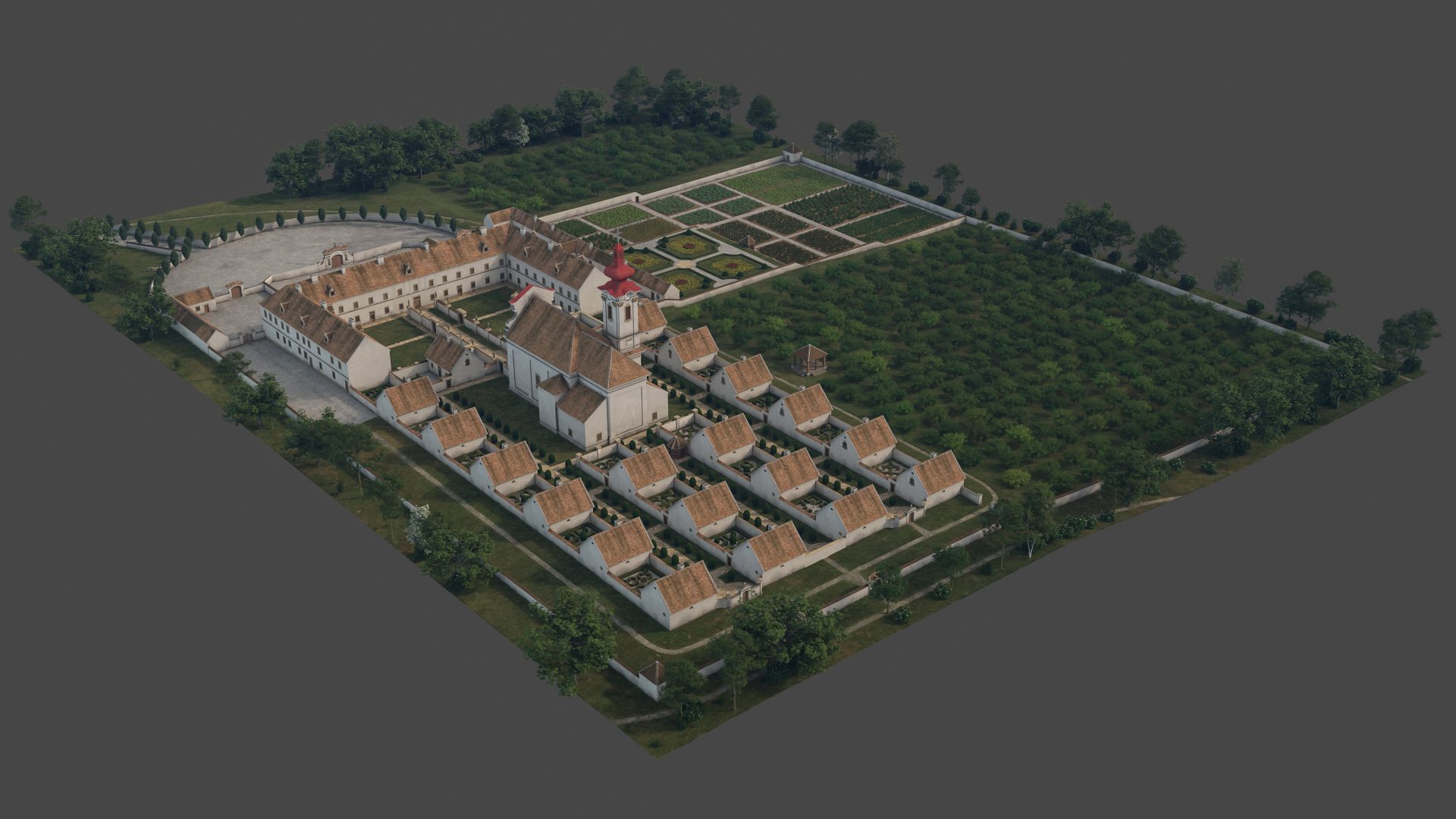
Camaldolese Hermitage in Majk
The monument complex, considered a curiosity throughout Europe, consists of seventeen cell houses, a church tower and a monastery. In 1733, the owner of the region, József Esterházy, founded the hermitage in Majk. After the peace of Szatmár in 1711, which ended the war of independence, the Majk hermitage of the Camaldolese monastic order, which embraced silence, was built from the donations of noble families loyal to Rákóczi, as a symbol of silence, which was one of the last possibilities of resistance. The design of the complex can be attributed to the renowned Austrian Baroque architect Franz Anton Pilgram (1699-1761). Pilgram’s concept could not be fully realized: during the construction completed in 1770, only seventeen of the originally planned twenty hermit houses were completed. The houses were built from donations from Hungarian aristocratic families, their donation is indicated by the coat of arms placed on the main facade of the houses. Our reconstructions recall the painting in Bielany, Poland, which shows the planned state of the Majk building complex, as well as the version built in reality, and also a second construction period. Miklós Rácz and Péter Sárossy were experts in the project within the framework of the NKVP.

